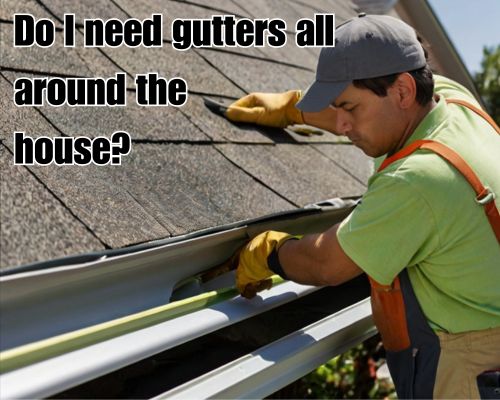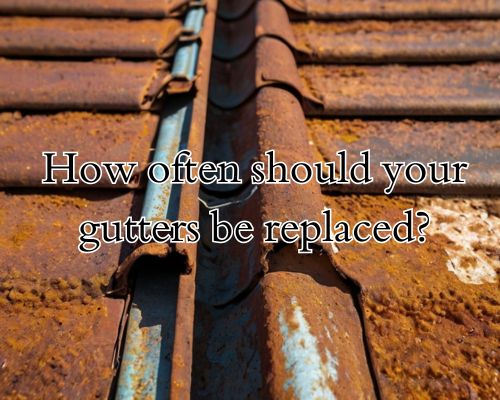
Do I Need Gutters All Around the House? A Melbourne Homeowner’s GuideDo I Need Gutters All Around the House? A Melbourne Homeowner’s Guide
When building, renovating, or maintaining a property in Melbourne, Australia, one common question arises: “Do I need gutters all around the house?” While it may seem like a simple concern, the answer hinges on several factors including local climate, house design, and council regulations. With Gutter Cleaning Melbourne, we’ll explore this question through a professional lens, offering deep insights, and essential local context for Melbourne homeowners.

✅ Why Gutters Matter in Melbourne’s Climate
Melbourne’s weather is notoriously unpredictable. It’s not uncommon to experience sunshine, showers, and gusty winds all in one day. According to the Bureau of Meteorology, Melbourne averages 600–800mm of rainfall annually, with frequent downpours occurring in spring and late autumn.
In this climate, having an efficient roof drainage system isn’t just helpful—it’s critical. Gutters serve to collect rainwater from the roof and channel it away from the home’s foundation, preventing erosion, rising damp, mould issues, and even structural damage.
So, the real question becomes not if gutters are necessary, but rather, where and how many you need.
🏡 Do You Need Gutters on All Sides of the House?
The short answer: Not necessarily.
The long answer: It depends on your roof design, landscaping, and legal obligations.
Here are the major factors to consider:
1. Roof Design and Pitch
In Melbourne suburbs like Hawthorn, Frankston, or Brighton, homes range from classic Federation-era styles to modern flat-roofed builds. A roof’s pitch and geometry significantly influence how water flows.
- Hip or gable roofs typically direct most water to two sides, meaning you may only need gutters there.
- Flat or skillion roofs may require full-perimeter gutters since water doesn’t have a natural path to fall in one direction.
- Multi-level roofs often have complex runoff zones, and ignoring one side can cause water to pool or damage internal walls.
🔎 LSI Keywords: pitched roof drainage, roof edge water flow, roof runoff direction
2. Local Council Regulations
Some Melbourne councils require homeowners to install gutters on all roof perimeters as part of their stormwater discharge compliance. This ensures that stormwater doesn’t spill onto neighbouring properties or footpaths.
Check with the City of Melbourne, Mornington Peninsula Shire, or Yarra Ranges Council, depending on your location, before making alterations to your gutter system.
3. Rainwater Harvesting Systems
If you’re using a rainwater tank, it makes sense to install gutters around more sides of the house. More collection points mean better water capture efficiency, particularly during brief Melbourne storms.
Homeowners in Mount Eliza or Berwick who use rainwater for toilets or gardens benefit from maximizing their catchment potential.
🚫 Risks of Incomplete Gutter Coverage
If you don’t install gutters around the entire house, here’s what could go wrong:
• Foundation Damage
Areas without gutters may allow water to pool around your home’s foundation. Over time, this can cause concrete slab movement or even undermine stumps in older timber homes.
• Erosion and Landscaping Issues
Without a proper outlet, water may create channels through your yard. This can damage lawns, create mud splashes on render, or ruin your paving and outdoor living spaces.
• Facade and Cladding Damage
Constant dripping on timber or fibre cement cladding can lead to rot and discolouration. Melbourne homes near the coast (e.g., St Kilda, Williamstown) are particularly vulnerable due to salt air accelerating material degradation.
🔎 LSI Keywords: stormwater erosion, gutter overflow, home foundation damage, water pooling near base
✅ When It’s Okay Not to Have Gutters on Every Side
There are circumstances where skipping gutters on some sides makes sense:
- Covered patios or pergolas with independent drainage
- Detached garages or sheds that are slightly downhill and have gravel drainage zones
- Homes with ground-level surface drainage built into landscaping
- Infrequent rainfall areas (not typical of Melbourne’s microclimate)
Still, these setups must comply with local building codes and should never allow uncontrolled stormwater runoff into shared boundaries or public areas.
🔧 Gutter Alternatives and Enhancements
If you’re unsure about investing in full-perimeter gutters, consider these alternative solutions:
1. Rain Diverters
Installed on roofs, these channel water away without a full gutter system. Good for low-flow areas but not ideal during Melbourne’s heavy spring storms.
2. Box Gutters
Common on flat roofs, these collect water internally and require excellent maintenance. Improperly installed box gutters are a common cause of leaks in inner-city terrace homes.
3. Slotted or Overflow Gutters
In areas prone to blockage from gum tree leaves (common in suburbs like Doncaster or Eltham), installing slotted gutters can prevent water from backing up into the eaves.
4. Drainage Grates
You can combine limited gutter runs with grated channel drains to capture surface runoff, especially in driveways or low-lying garden zones.
🔎 LSI Keywords: box gutters, overflow gutters, drainage channels, rain diverter systems
🛠️ Maintenance Considerations
Even if you decide not to install gutters on all sides, regular maintenance of existing systems is non-negotiable.
In Melbourne’s leafy suburbs, biannual gutter cleaning (usually autumn and spring) is recommended. Otherwise, debris like eucalyptus leaves and nesting materials can cause blockages, leading to water overflow.
Hiring a professional gutter cleaner in Melbourne like Gutter Cleaning Melbourne can cost around $150–$300, depending on roof height and access complexity. Adding gutter guards may increase the upfront cost but reduce long-term maintenance.
📍 Local Insight: Tailoring Gutters to Melbourne Homes
In Melbourne’s heritage precincts like Carlton, Fitzroy, and Parkville, homes must comply with heritage overlay rules when updating roof or drainage elements. That often limits visible alterations, pushing homeowners to internal guttering or subtle architectural solutions.
In newer suburbs like Clyde North or Point Cook, guttering is often integrated into overall stormwater infrastructure designed by developers. However, individual property maintenance is still crucial to avoid fines or property damage.
🧠 Final Verdict: Should You Install Gutters All Around?
While you may not technically need gutters around every inch of your home, in most Melbourne settings, it’s recommended. Here’s a quick checklist:
✅ Your roof pushes runoff to multiple edges
✅ You want to prevent water pooling or erosion
✅ You’re using a rainwater collection system
✅ Your local council mandates full stormwater compliance
✅ You live in a high rainfall suburb or under trees
💬 Pro tip: Consult with a licensed roof plumber or drainage specialist in Melbourne to conduct a site-specific assessment. It could save you thousands in water damage repairs later.
